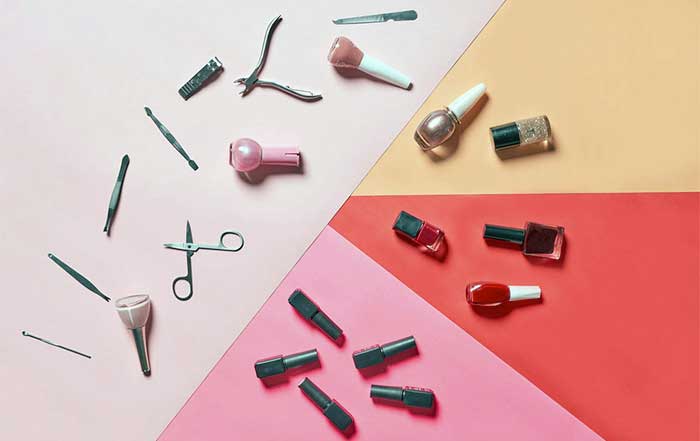Having beautiful nails isn't just by chance; it results from proper nail care. Here is the best manicure and pedicure advice from well-qualified, seasoned dermatologists:
Check the setup: Check that your soaking tub is coated with a fresh plastic barrier; have someone disinfect it before allowing them to fill it with water. Also, keep in mind that your tools are coming out of a disposable plastic pack, indicating that they have been sanitized before use. By all means, debris and cracks should be avoided in your tub. Next, communicate: You're about to meet your nail technician here; ensure you share what you want before they begin- that's how to guarantee a safe pedicure. Before they start working, make sure you're both on the same page regarding the items required.
Don't shave before you go: You're looking out for your technician, but they've seen way worse situations. So, refrain from shaving; you may well become infected if you have fresh nicks. Remember, you're bathing in a tub with things that sloughs off your feet and legs. If you have a fresh cut and it's soaking in warm water, you are placing yourself at risk of letting bacteria get trapped in the area. Cuticles: The cuticles are the skin at the base. They're frequently clipped, cropped, and pulled back for cosmetic purposes. The cuticle serves as one of our primary defenses against germs. The sealant prevents germs and other bugs from entering the nail. Thus, your nail technician should not trim or push them back too far. Ask them to use a nipper for trimming, but don't cut them entirely away or force them back.
Sharp tools to dig under the nail: Debris usually finds its way beneath our fingernails and toes regardless of how clean or attentive we are. This can manifest as sock fuzz, toenail fungus, or other things. Don't allow your nail technician to stab you with a sharp steel tool under the nails. Instead, they should gently brush away the dirt beneath the nail using a dull instrument. If they use anything sharp and puncture your skin under the nail bed, you likely won't notice it until it's oozing with pus a week later. The critical word here is "gentle." Yes, pedicure shouldn't be aggressive in any way.
Skip the Cheese Grater: Do not allow the technician to use a razor or anything that resembles a "torture instrument" to remove callus from the bottom of your feet. If they get too deep, you're basically begging for an infection. The best options are a pumice stone or a large grit sandpaper board.
Toenails should ideally be short and straight across: Make sure your nail technician understands. There'll be no V's in the center, digging for ingrown toenails on either edge, deep rounding, or almond-shaped nails. Keep in mind that toenails are not the same as fingernails, and you wear shoes. You are more prone to fungus if your toenails are kept uncut for an extended period of time. Hence, you are more likely to get ingrown toenails if they are too deeply shaped.
BYOP (Bring Your Own) Polish: Traditional nail paints consist of several chemicals, including well-known carcinogens that have been linked to health problems in women. Some of these items include substances that are completely prohibited. As such, be mindful of what you apply to your nails since it is absorbed into your bloodstream via the nail plate. Look for a polish that is "5 free," if not "10 free." Also, dry between your toes: Toes are pushed into shoes and anyone with toes that are close together or pounded risks developing an infection or "toe jam" between the toes. Lace a piece of gauze or a washcloth between your toes to give them some breathing room while they dry.
Stop Hiding: Stop covering up thick, discoloured toes with nail polish, expecting them to disappear; you could be concealing a fungus or yeast. Since, your polish prevents your nails from breathing, it's critical to have such issues checked by a professional lest they worsen.
Undoubtedly, having beautiful toenails is every young lady's dream. But- to succeed- you have to have a plan in place. Ensure your nail technician really knows what they're doing. If necessary, instruct them on precisely what you want. Ultimately, you should be in charge of how your nails are managed and cared for.

